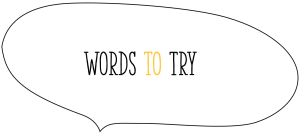12 Institutions and Representation
Sukhmandeep Kaur
 Social institutions consist of an infrastructure of people with socially approved power and authority to make decisions that impact the lives of everybody in society. However, not all the decisions or structuring of institutions benefit the wellbeing of people equally, and not all institutions themselves represent equality in its many definitions.
Social institutions consist of an infrastructure of people with socially approved power and authority to make decisions that impact the lives of everybody in society. However, not all the decisions or structuring of institutions benefit the wellbeing of people equally, and not all institutions themselves represent equality in its many definitions.
 For instance, educational institutions are supposed to teach skills and knowledge to young learners. However, schools could be a site of oppression through the production of selective knowledge, exclusive teaching strategies and curriculum, or disproportionate distribution of instructors belonging to a certain ethnicity or gender due to systemic barriers. Universities are gendered; less than a quarter of university presidents are women, and the salary difference is 5%.[1] Institutions may use superficial strategies to showcase their equities, but continue to marginalize certain groups. The discoveries at former residential school sites of the undocumented remains of Indigenous children highlights the historical roles of educational institutions in genocide and systemic racism.
For instance, educational institutions are supposed to teach skills and knowledge to young learners. However, schools could be a site of oppression through the production of selective knowledge, exclusive teaching strategies and curriculum, or disproportionate distribution of instructors belonging to a certain ethnicity or gender due to systemic barriers. Universities are gendered; less than a quarter of university presidents are women, and the salary difference is 5%.[1] Institutions may use superficial strategies to showcase their equities, but continue to marginalize certain groups. The discoveries at former residential school sites of the undocumented remains of Indigenous children highlights the historical roles of educational institutions in genocide and systemic racism.
Media is an institution used for communication and distribution of various forms of creative and informational content to society. The role of media in (re)producing gendered ideologies is quite clear. For example, in commercials for home cleaning products, it is usually women actors describing the products, demonstrating social expectations for women even as gender roles have changed. Tales such as that of Cinderella and Snow White depict societal norms and values associated with certain gender identities: the feminine nature of women who are physically weak, and need a white, heterosexual, charming prince to protect them. However, stories like these erase people who are neither white nor heterosexual and who have histories burdened with oppression and colonization. The reason behind such unequal role distribution is the normalization of gender roles and racism to maintain patriarchy and white privilege.
 Heteronormative: belief that heterosexuality is the normal sexual orientation
Heteronormative: belief that heterosexuality is the normal sexual orientation
Stereotype: generalization that all members of a group have a certain common quality
Representation: how certain groups are depicted in media, such as through stereotypes or specific repeated narratives; or, the proportion of a group within a certain institution, such as the number of women principals in a school district
- Wang, C., & Doolittle, R. (2021). "Locked out of the ivory tower: How universities keep women from rising to the top." https://www.theglobeandmail.com/canada/article-locked-out-of-the-ivory-tower-how-universities-keep-women-from-rising/ ↵
belief that heterosexuality is the normal sexual orientation
generalization that all members of a group have a certain common quality
how certain groups are depicted in media, such as through stereotypes or specific repeated narratives; or, the proportion of a group within a certain institution, such as the number of women principals in a school district

